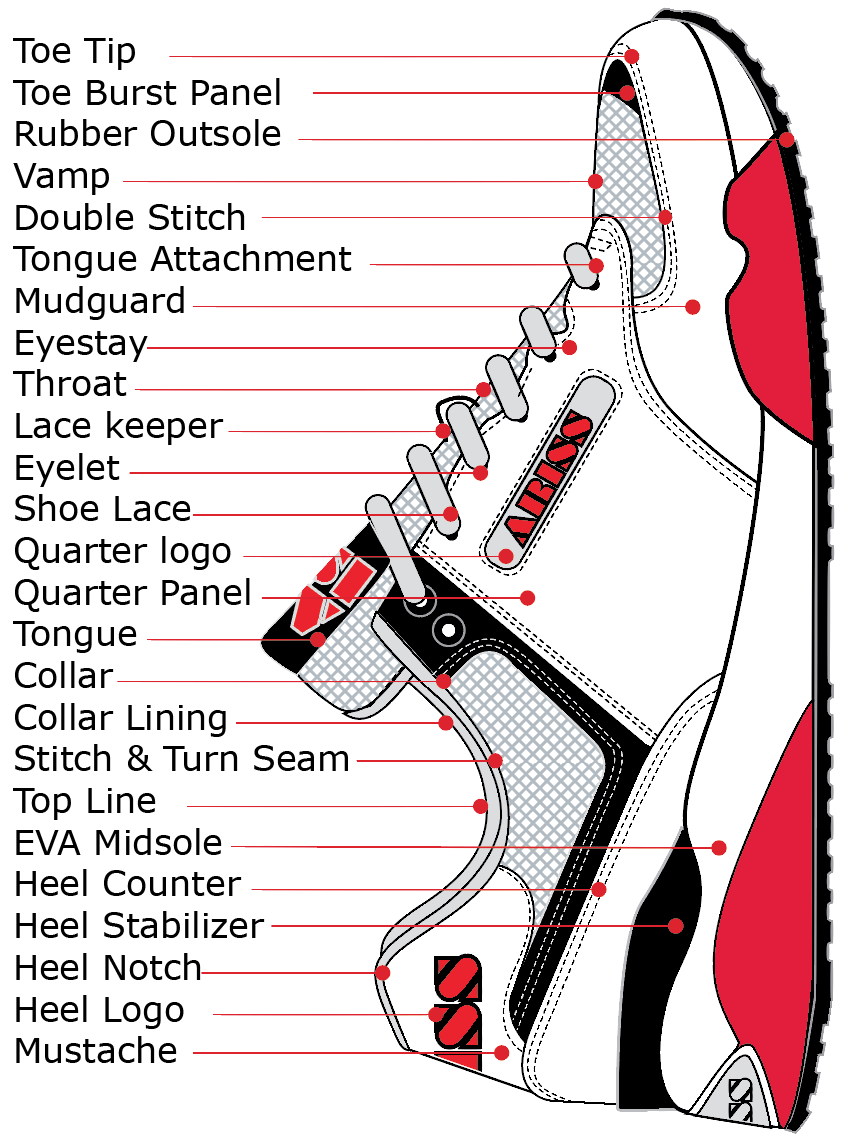How are Nike Shoes Made? Cold Cement Construction
The Process of Making Nike Shoes
Most Nike shoes are made by cold cement construction process. Shoe cement is simply PU glue! The PU glue or shoe cement is solvent or water-based. Almost all sports footwear types are cemented shoes.<em> </em>If you want to learn how to design shoes, you need to know this basic shoemaking process. Cold cement is the modern updated style of shoe construction.
Vans and Converse shoes use an old fashion high heat vulcanized shoe construction, while Nike’s cold cement shoe construction allows the use of modern lightweight plastic, foam, and mesh materials due to the low temperatures required for bonding the upper to the shoe sole. Every modern high-performance athletic shoe manufactured by Nike for running, basketball, etc… is made by this cold cement process. Every Air Jordan basketball shoe for the Jordan 1 to the Jordan 30+ is made by the cold cement process. This is how Nike makes all of its performance athletic shoes.
Cold Cement Shoe Assembly Process:

First, the upper is steamed to soften the materials and the last is inserted and pulled tight. Once the last is tight inside the upper a second lasting machine pulls the heel edge. Once the last is secured inside the upper and temporary shoelaces are pulled tight, the upper is cooled to shrink the upper tight to the last.
The shoe may have a plastic or fabric part installed on top of the tongue to protect the surface from damage and drift during the lasting operations.
While the upper is being lasted the sole unit is being prepared. In this case, the rubber sheet sole is combined with the EVA foam cushioning component cemented inside. This is done in a separate process that’s called stock fitting.
Primer and Cement:
Now that the upper is lasted tightly and the outside unit is complete, the two pieces come together. The rubber sole unit will receive coatings of primer and cement. The outsole will get its own special primer designed for EVA and rubber. The shoe upper is also prepared with its own special primer and cement.
After the contact cement and primer have been completely dried in the heating tunnels, the two pieces are joined together by hand. The skilled worker aligns the upper and outsole together, then places the shoe in a hydraulic press.
Pressing, cooling, and de-lasting
The shoe will have 3 pressing operations usually all done with one machine. A vertical press, toe and heel press, and side presses. This ensures there is full contact between the upper and outsole. Once the shoe is pressed together it’s often put in the cooling tunnel to set the glue.
After the cooling tunnel, a shoe de-lasting machine is used to push the last out of the shoe without wrinkling the upper.
Now the sneaker is complete. At this point, you can insert the footbed. The footbed may be molded EVA with a fabric cover or flat sheet cut foam. The flat die-cut footbed is usually cemented inside the shoe, while molded footbeds are most often removable.


